Do you have a question about the Saturn 2007 Aura and is the answer not in the manual?
Adjusting and features of front seats, including manual and power adjustments, and heated seats.
Information on rear seat features, including split folding rear seats and access to the trunk.
Guidance on proper safety belt usage, their importance, and how they work for everyone.
Information on proper restraint for older children, infants, and young children, including LATCH systems.
Details on the vehicle's airbag system, including types, operation, and safety precautions.
Instructions on how to check safety belts, buckles, and airbag covers for proper function.
Information on vehicle keys, including their use for ignition and locks, and key code tags.
Details on locking and unlocking doors, including power locks, child security locks, and lockout protection.
Operation of power windows, including express-down/up features and anti-pinch override.
Information on the content theft-deterrent system, arming, disarming, and tamper detection.
Guidance on new vehicle break-in, ignition positions, starting the engine, and operating the vehicle.
Details on manual and automatic rearview mirrors, including adjustment and cleaning.
Overview of OnStar® services, including safety, security, and convenience features.
Instructions for programming the universal home remote system for garage door openers.
Information on vehicle storage locations such as glove box, cupholders, and center console.
Operation of the sunroof and sunshade, including express features and anti-pinch.
Identification of main components of the instrument panel and their functions.
Operation of heating, cooling, and ventilation systems, including automatic and manual modes.
Explanation of vehicle warning lights and gauges, and what they indicate about vehicle functions.
Description of the DIC, its displays, warnings, messages, and personalization features.
General advice on driving, including defensive driving, and understanding the vehicle's behavior.
Principles of defensive driving, emphasizing readiness and hazard anticipation.
Information on the dangers of alcohol-impaired driving and Blood Alcohol Concentration (BAC).
Explanation of vehicle control systems: brakes, steering, and accelerator, and tire traction.
Guidance on braking, including perception and reaction time, and stopping distances.
Details on the ABS system, its operation, and the ABS warning light.
Explanation of the TCS system, its operation, and the LOW TRACTION message.
Information on the ETS system, its operation, and related warning lights and messages.
Description of the ESC system, its features, and related indicator lights and messages.
Guidance on vehicle steering, including power steering assist and steering tips for curves.
Instructions on how to recover a vehicle that has driven off the road onto the shoulder.
Tips and safety advice for safely passing other vehicles on the road.
Information on what happens when control systems fail and advice for emergency situations.
Tips and advice for safer driving during nighttime conditions.
Guidance on driving safely in rainy or wet road conditions, including hydroplaning.
Advice for increasing safety while driving in city traffic conditions.
Important rules and advice for driving safely on freeways and expressways.
Checklist and advice for preparing the vehicle and driver for long trips.
Understanding and avoiding highway hypnosis to maintain driver awareness.
Tips for driving safely on steep hills and mountain roads, including braking and shifting.
Advice for driving safely during winter conditions, including snow and ice.
Instructions on how to free a vehicle stuck in various conditions, including the rocking method.
General information and considerations for towing a vehicle or a trailer.
Guidance on towing a disabled vehicle, including when to use professional services.
Details on towing the vehicle behind another for recreational purposes (dinghy or dolly towing).
Important tips and safety rules for driving with a trailer, including weight and handling.
Information on Saturn retailers, genuine parts, and recommended service practices.
Guidance on recommended fuel types, octane ratings, and additives for optimal performance.
Instructions on how to check under the hood, including hood release and engine compartment overview.
Information on checking and adding engine oil, including oil life system and recommended types.
Instructions on how to inspect and replace the engine air cleaner/filter.
Details on checking and changing automatic transaxle fluid levels and procedures.
Information on the cooling system, coolant types, and protection levels.
Guidance on checking and adding power steering fluid, including fluid types.
Information on windshield washer fluid, including what to use and how to add it.
Details on brake fluid, brake wear, brake pedal travel, and brake adjustment.
Information on the maintenance-free battery, replacement, and vehicle storage precautions.
Instructions for replacing various vehicle bulbs, including halogen bulbs and exterior lamps.
Procedure for replacing the license plate lamp bulb.
Instructions on how to inspect and replace windshield wiper blades.
Information on tire quality, maintenance, and safety, including inflation and wear.
Explanation of information molded into the tire sidewall, including size and performance criteria.
Definitions of common tire terms such as air pressure, aspect ratio, and treadwear.
Guidance on checking and maintaining correct tire inflation pressure for safety and performance.
Details on the TPMS, its function, malfunction indicators, and sensor identification.
Recommendations for tire inspection and rotation to ensure uniform wear and performance.
Indicators for determining when new tires are needed, and advice on buying replacement tires.
Discussion on the effects of using different sized tires and wheels on vehicle performance and safety.
Explanation of the UTQG system for grading tires by treadwear, traction, and temperature.
Information on maintaining wheel alignment and tire balance for optimal performance and tire life.
Guidance on when and how to replace vehicle wheels, including safety precautions.
Warnings and instructions regarding the use of tire chains and other traction devices.
Tips on what to expect and how to handle a tire blowout or flat tire while driving.
Step-by-step instructions for safely changing a flat tire using the provided jacking equipment.
Procedure for accessing and removing the spare tire, jack, and wheel wrench from the trunk.
Instructions on how to properly store the flat tire and changing tools in the vehicle.
Guidelines for maintaining the vehicle's interior and exterior appearance.
Advice on cleaning upholstery, carpets, and interior surfaces to maintain appearance.
Techniques for cleaning fabric and carpet interiors, including stain removal.
Methods for cleaning interior plastic surfaces, instrument panels, and vinyl.
Instructions on how to clean safety belts properly without weakening them.
Tips for maintaining weatherstrips to ensure a good seal and prevent sticking.
Guidelines for washing the vehicle's exterior to preserve paint finish and durability.
Care instructions for aluminum and chrome-plated wheels, including cleaning precautions.
Importance of repairing sheet metal damage promptly to restore corrosion protection.
Information on chemical fallout damage to paint and warranty coverage for new vehicles.
Location and significance of the Vehicle Identification Number (VIN) and service parts label.
Guidelines and warnings about adding aftermarket electrical equipment to the vehicle.
Explanation of the vehicle's fuse system, how to replace fuses, and fuse block locations.
Diagram and location of the engine compartment fuse block.
Introduction to maintenance requirements and how to use the schedule based on driving habits.
Details on Maintenance I and Maintenance II service intervals and requirements.
Specific services required at different mileage intervals, based on engine type and driving conditions.
Detailed explanations and instructions referenced in the maintenance schedule footnotes.
Owner-performed checks and services to ensure vehicle safety, dependability, and performance.
Underhood checks to perform each time the vehicle is refueled, including fluid levels.
Monthly checks including tire inflation and tire wear inspection.
Annual checks including starter switch and automatic transaxle shift lock control system.
List of recommended fluids and lubricants, including part numbers and specifications.
List of common replacement parts with their part numbers for routine maintenance.
Overview of customer assistance, including the satisfaction procedure and contact information.
Steps to follow for resolving concerns, contacting retail assistance, and escalating issues.
Information about the Saturn Online Owner Center for vehicle information and service reminders.
Contact information for hearing or speech-impaired customers using TDD or TTY devices.
Contact details for Saturn Customer Assistance Centers in the U.S. and Canada.
Details on the GM Mobility program for reimbursing aftermarket adaptive equipment.
Information on Roadside Assistance coverage, who is covered, and contact details.
Guidance on managing vehicle damage repairs, including choosing repair facilities and parts.
How to report safety defects to the U.S. Government, Canadian Government, and Saturn.
Information on vehicle computer modules, data storage, and privacy policies.
Explanation of the EDR system, data recorded, and privacy considerations.
Information on OnStar® services, terms, conditions, and data collection.
Details on the navigation system, data storage, and instructions for data deletion.
Explanation of RFID technology used for vehicle functions like tire pressure monitoring and key fobs.
Adjusting and features of front seats, including manual and power adjustments, and heated seats.
Information on rear seat features, including split folding rear seats and access to the trunk.
Guidance on proper safety belt usage, their importance, and how they work for everyone.
Information on proper restraint for older children, infants, and young children, including LATCH systems.
Details on the vehicle's airbag system, including types, operation, and safety precautions.
Instructions on how to check safety belts, buckles, and airbag covers for proper function.
Information on vehicle keys, including their use for ignition and locks, and key code tags.
Details on locking and unlocking doors, including power locks, child security locks, and lockout protection.
Operation of power windows, including express-down/up features and anti-pinch override.
Information on the content theft-deterrent system, arming, disarming, and tamper detection.
Guidance on new vehicle break-in, ignition positions, starting the engine, and operating the vehicle.
Details on manual and automatic rearview mirrors, including adjustment and cleaning.
Overview of OnStar® services, including safety, security, and convenience features.
Instructions for programming the universal home remote system for garage door openers.
Information on vehicle storage locations such as glove box, cupholders, and center console.
Operation of the sunroof and sunshade, including express features and anti-pinch.
Identification of main components of the instrument panel and their functions.
Operation of heating, cooling, and ventilation systems, including automatic and manual modes.
Explanation of vehicle warning lights and gauges, and what they indicate about vehicle functions.
Description of the DIC, its displays, warnings, messages, and personalization features.
General advice on driving, including defensive driving, and understanding the vehicle's behavior.
Principles of defensive driving, emphasizing readiness and hazard anticipation.
Information on the dangers of alcohol-impaired driving and Blood Alcohol Concentration (BAC).
Explanation of vehicle control systems: brakes, steering, and accelerator, and tire traction.
Guidance on braking, including perception and reaction time, and stopping distances.
Details on the ABS system, its operation, and the ABS warning light.
Explanation of the TCS system, its operation, and the LOW TRACTION message.
Information on the ETS system, its operation, and related warning lights and messages.
Description of the ESC system, its features, and related indicator lights and messages.
Guidance on vehicle steering, including power steering assist and steering tips for curves.
Instructions on how to recover a vehicle that has driven off the road onto the shoulder.
Tips and safety advice for safely passing other vehicles on the road.
Information on what happens when control systems fail and advice for emergency situations.
Tips and advice for safer driving during nighttime conditions.
Guidance on driving safely in rainy or wet road conditions, including hydroplaning.
Advice for increasing safety while driving in city traffic conditions.
Important rules and advice for driving safely on freeways and expressways.
Checklist and advice for preparing the vehicle and driver for long trips.
Understanding and avoiding highway hypnosis to maintain driver awareness.
Tips for driving safely on steep hills and mountain roads, including braking and shifting.
Advice for driving safely during winter conditions, including snow and ice.
Instructions on how to free a vehicle stuck in various conditions, including the rocking method.
General information and considerations for towing a vehicle or a trailer.
Guidance on towing a disabled vehicle, including when to use professional services.
Details on towing the vehicle behind another for recreational purposes (dinghy or dolly towing).
Important tips and safety rules for driving with a trailer, including weight and handling.
Information on Saturn retailers, genuine parts, and recommended service practices.
Guidance on recommended fuel types, octane ratings, and additives for optimal performance.
Instructions on how to check under the hood, including hood release and engine compartment overview.
Information on checking and adding engine oil, including oil life system and recommended types.
Instructions on how to inspect and replace the engine air cleaner/filter.
Details on checking and changing automatic transaxle fluid levels and procedures.
Information on the cooling system, coolant types, and protection levels.
Guidance on checking and adding power steering fluid, including fluid types.
Information on windshield washer fluid, including what to use and how to add it.
Details on brake fluid, brake wear, brake pedal travel, and brake adjustment.
Information on the maintenance-free battery, replacement, and vehicle storage precautions.
Instructions for replacing various vehicle bulbs, including halogen bulbs and exterior lamps.
Procedure for replacing the license plate lamp bulb.
Instructions on how to inspect and replace windshield wiper blades.
Information on tire quality, maintenance, and safety, including inflation and wear.
Explanation of information molded into the tire sidewall, including size and performance criteria.
Definitions of common tire terms such as air pressure, aspect ratio, and treadwear.
Guidance on checking and maintaining correct tire inflation pressure for safety and performance.
Details on the TPMS, its function, malfunction indicators, and sensor identification.
Recommendations for tire inspection and rotation to ensure uniform wear and performance.
Indicators for determining when new tires are needed, and advice on buying replacement tires.
Discussion on the effects of using different sized tires and wheels on vehicle performance and safety.
Explanation of the UTQG system for grading tires by treadwear, traction, and temperature.
Information on maintaining wheel alignment and tire balance for optimal performance and tire life.
Guidance on when and how to replace vehicle wheels, including safety precautions.
Warnings and instructions regarding the use of tire chains and other traction devices.
Tips on what to expect and how to handle a tire blowout or flat tire while driving.
Step-by-step instructions for safely changing a flat tire using the provided jacking equipment.
Procedure for accessing and removing the spare tire, jack, and wheel wrench from the trunk.
Instructions on how to properly store the flat tire and changing tools in the vehicle.
Guidelines for maintaining the vehicle's interior and exterior appearance.
Advice on cleaning upholstery, carpets, and interior surfaces to maintain appearance.
Techniques for cleaning fabric and carpet interiors, including stain removal.
Methods for cleaning interior plastic surfaces, instrument panels, and vinyl.
Instructions on how to clean safety belts properly without weakening them.
Tips for maintaining weatherstrips to ensure a good seal and prevent sticking.
Guidelines for washing the vehicle's exterior to preserve paint finish and durability.
Care instructions for aluminum and chrome-plated wheels, including cleaning precautions.
Importance of repairing sheet metal damage promptly to restore corrosion protection.
Information on chemical fallout damage to paint and warranty coverage for new vehicles.
Location and significance of the Vehicle Identification Number (VIN) and service parts label.
Guidelines and warnings about adding aftermarket electrical equipment to the vehicle.
Explanation of the vehicle's fuse system, how to replace fuses, and fuse block locations.
Diagram and location of the engine compartment fuse block.
Introduction to maintenance requirements and how to use the schedule based on driving habits.
Details on Maintenance I and Maintenance II service intervals and requirements.
Specific services required at different mileage intervals, based on engine type and driving conditions.
Detailed explanations and instructions referenced in the maintenance schedule footnotes.
Owner-performed checks and services to ensure vehicle safety, dependability, and performance.
Underhood checks to perform each time the vehicle is refueled, including fluid levels.
Monthly checks including tire inflation and tire wear inspection.
Annual checks including starter switch and automatic transaxle shift lock control system.
List of recommended fluids and lubricants, including part numbers and specifications.
List of common replacement parts with their part numbers for routine maintenance.
Overview of customer assistance, including the satisfaction procedure and contact information.
Steps to follow for resolving concerns, contacting retail assistance, and escalating issues.
Information about the Saturn Online Owner Center for vehicle information and service reminders.
Contact information for hearing or speech-impaired customers using TDD or TTY devices.
Contact details for Saturn Customer Assistance Centers in the U.S. and Canada.
Details on the GM Mobility program for reimbursing aftermarket adaptive equipment.
Information on Roadside Assistance coverage, who is covered, and contact details.
Guidance on managing vehicle damage repairs, including choosing repair facilities and parts.
How to report safety defects to the U.S. Government, Canadian Government, and Saturn.
Information on vehicle computer modules, data storage, and privacy policies.
Explanation of the EDR system, data recorded, and privacy considerations.
Information on OnStar® services, terms, conditions, and data collection.
Details on the navigation system, data storage, and instructions for data deletion.
Explanation of RFID technology used for vehicle functions like tire pressure monitoring and key fobs.
| Brand | Saturn |
|---|---|
| Model | 2007 Aura |
| Category | Automobile |
| Language | English |
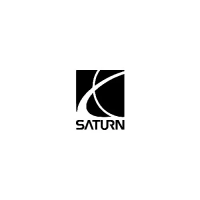
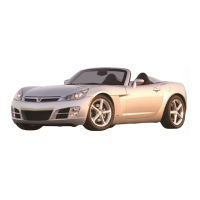

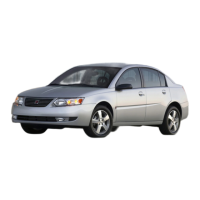
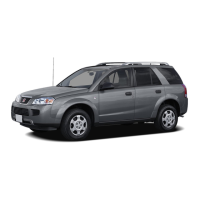
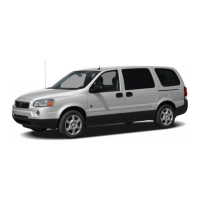
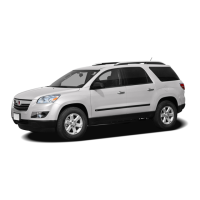
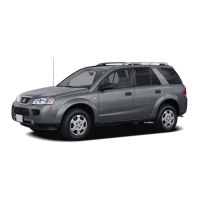




